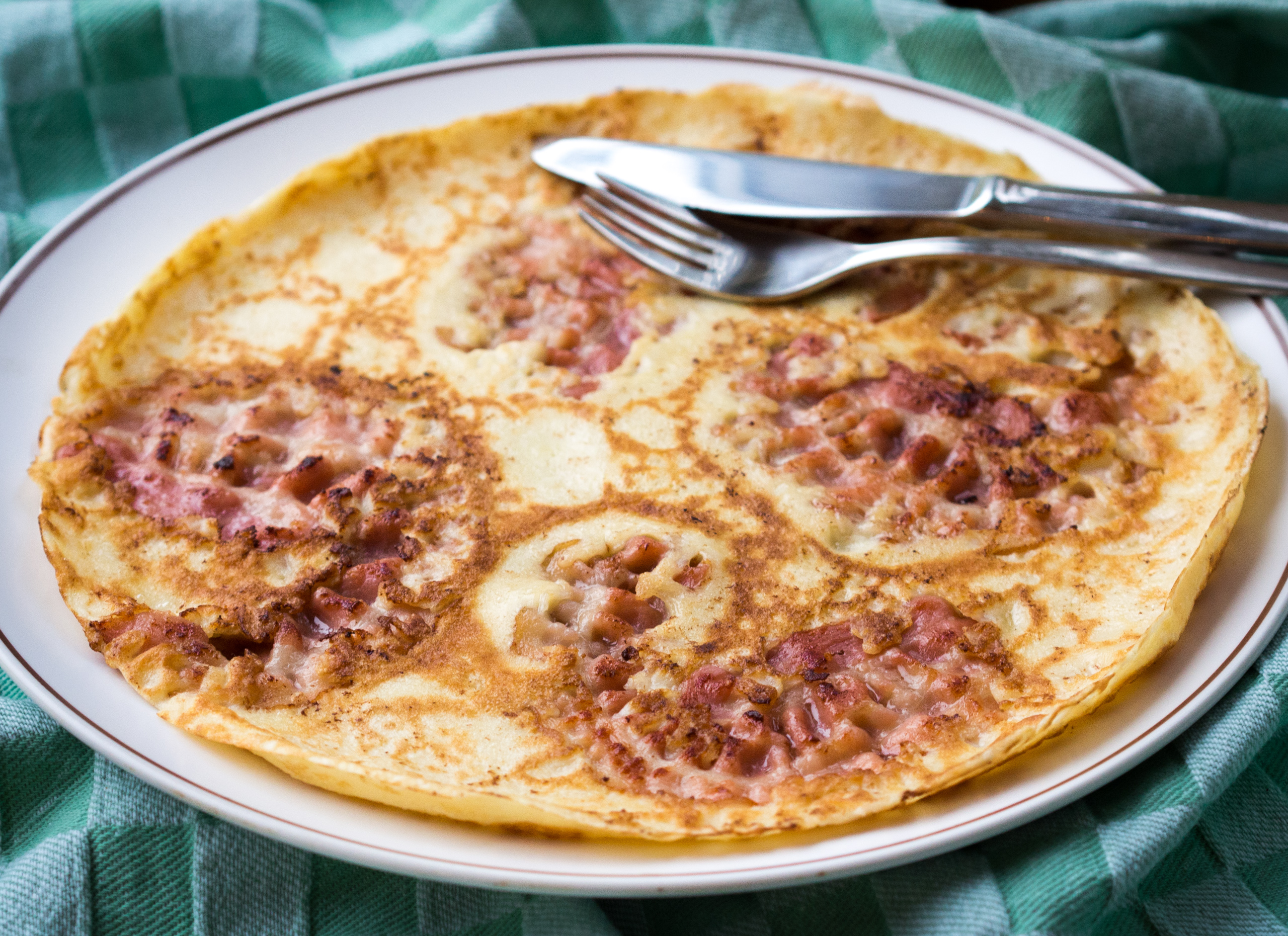My search for budget and January-friendly recipes has taken me beyond South Africa. Off to the Netherlands we go.
A few days ago, my Dutch friend, who is more South African because he has lived in the country for more than two decades, introduced me to pancakes with a twist.
I clutched my pearls when he invited me over to his Johannesburg home and informed me that on the dinner menu were pancakes. I expected something more elaborate and not breakfast food for dinner. After all, pancakes in South Africa are considered a breakfast staple.
But in the Netherlands, pancakes, known as pannenkoeken, are an all-day treat. Pannenkoeken are different from the pancakes most people in South Africa are accustomed to. They aren’t fluffy; they are thin but enormous.
Dutch pancakes are reminiscent of crêpes. Like crêpes, they have an eggy batter, are sturdy, and can support all kinds of mix-ins and toppings. They take on the flavour of what you add to them.
I gasped at how my Dutch friend served the pancakes. He embraced savoury and sweet flavours — all on a dish. Ham and sometimes cheese is cooked right into the pancakes. That is the savoury part. Maple syrup, dark brown sugar and ground cinnamon were spread out on the dinner table to be put into the pancakes. And that is the sweet part.
My Dutch-South African friend tells me that sometimes apple slices are added to the pancakes. I tasted the sweet and savoury combo but I struggled with it. I ended up sticking with the savoury flavours as I ate more pancakes.
Making pancakes is simple. My Dutch friend says the recipe doesn’t require precise measurements as the ingredients are mixed intuitively by eye and hope. The recipe is also budget-friendly and in line with Daily Maverick’s Thrifty January series.
The splurge on ingredients is ham, apples, and cheese (cheddar or other medium-hard cheeses work, but preferably gouda as the Netherlands is known for it).
My friend has shared some tips for making and perfecting Dutch pancakes:
- Use a non-stick frying pan, which will make flipping the thin pancakes easier. You can use a skillet but you’ll have to put in more oil or butter to prevent the pancakes from sticking.
- Allow the batter mixture to rest in the fridge for two hours or more. (I don’t know the science behind this but the rest allows the gluten in the batter to relax and paves the way for fluffier pancakes.)
- There is no exact heat level and timing required for making the pancake. It’s all about trial and error. The first pancake on the pan will probably be a disaster, but you’ll eventually find the sweet spot for the heat level. The pancakes made after the first will turn out right.
- The pancakes can be difficult to flip. You have to wait until the top dries, small holes start forming, and the edges brown before sliding a spatula underneath the pancake to flip it. If the batter is still wet, the pancake will tear apart.
Ray’s flippin’ lekker Dutch pancakes
Ingredients
1 cup all-purpose flour
½ tsp salt
1 tsp baking powder
1 cup milk, plus more as needed
2 large eggs
1 cup boiled water
1 tsp concentrated lemon juice
2 Tbsp olive oil
1 Tbsp butter
Ground cinnamon
Ham
Maple syrup
Grated gouda (or any other cheese of your choice)
Method
Preparing the batter:
In a large bowl, whisk together the flour, salt, and baking powder. Gradually add the milk, whisking constantly to prevent lumps from forming.
Crack in the eggs and add lemon juice. Whisk until smooth and well combined. For extra thin pancakes, you can add a bit more milk to the batter. Let the batter rest for two hours or more in the fridge (optional).
Cooking the pancakes:
Heat a non-stick frying pan or skillet over medium-high heat. Add olive oil, swirling the pan to coat the bottom evenly. Then remove excess oil into a cup for use with the next batch of pancake batter.
Pour a ladle of batter (about ½ cup) into the pan, swirling the pan quickly to spread the batter evenly into a thin, round shape. As the batter firms, lay 1 or 2 slices of ham on it. Let the pancake cook for about 2 to 3 minutes, until the edges start to lift and the bottom is golden brown.
Flip the pancake carefully with a spatula, and cook for another 1 to 2 minutes until the second side is also golden and cooked through. Once cooked through, remove the pancake and set aside on a plate.
In a bowl, melt butter in the microwave and pour 1 cup of boiled water, and mix together. With a tablespoon, pour the butter and water mixture in between every layer of cooked pancakes that have been set aside.
It is important to keep the cooked pancakes warm in between making new batches. The warmth prevents the pancakes (coated with the butter and water mixture) from drying out.
Use a double boiler to keep the pancakes warm. If you don’t have a double boiler, simply fill a pot with a small amount of water, just enough to create steam (about 2 to 3cm deep). Bring it to a simmer over medium heat. The water should not be so high that it touches the bowl.
Once the water is simmering, place the heatproof bowl on top of the pot. The bowl should fit snugly and not touch the water. This is your double boiler setup. Cover the pancakes with a bowl in the double boiler setup.
To serve:
Transfer the pancake to a plate and add your favorite toppings. Traditional Dutch toppings include maple syrup, brown sugar and dustings of ground cinnamon. You can also add savoury toppings like grated cheese. DM





